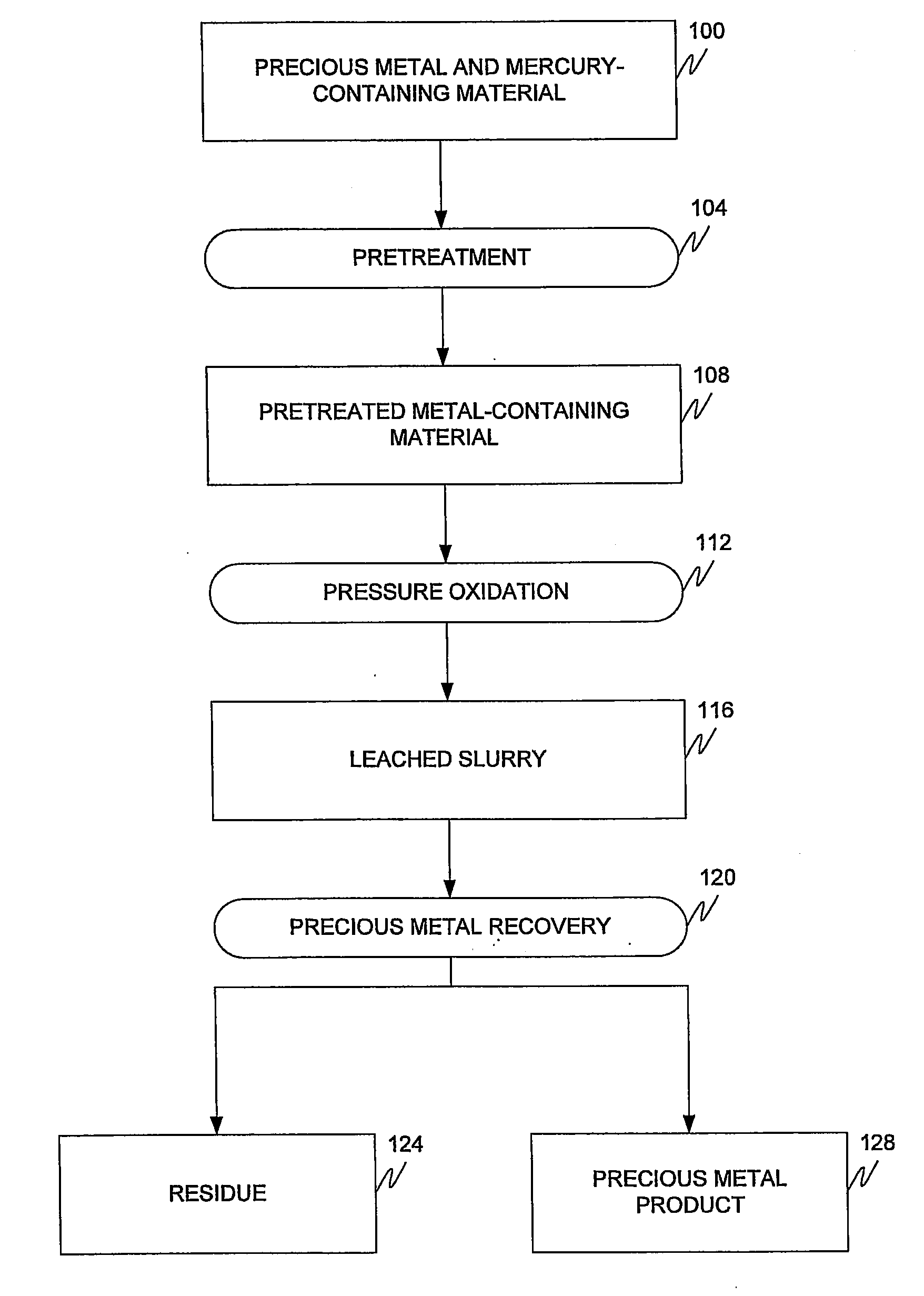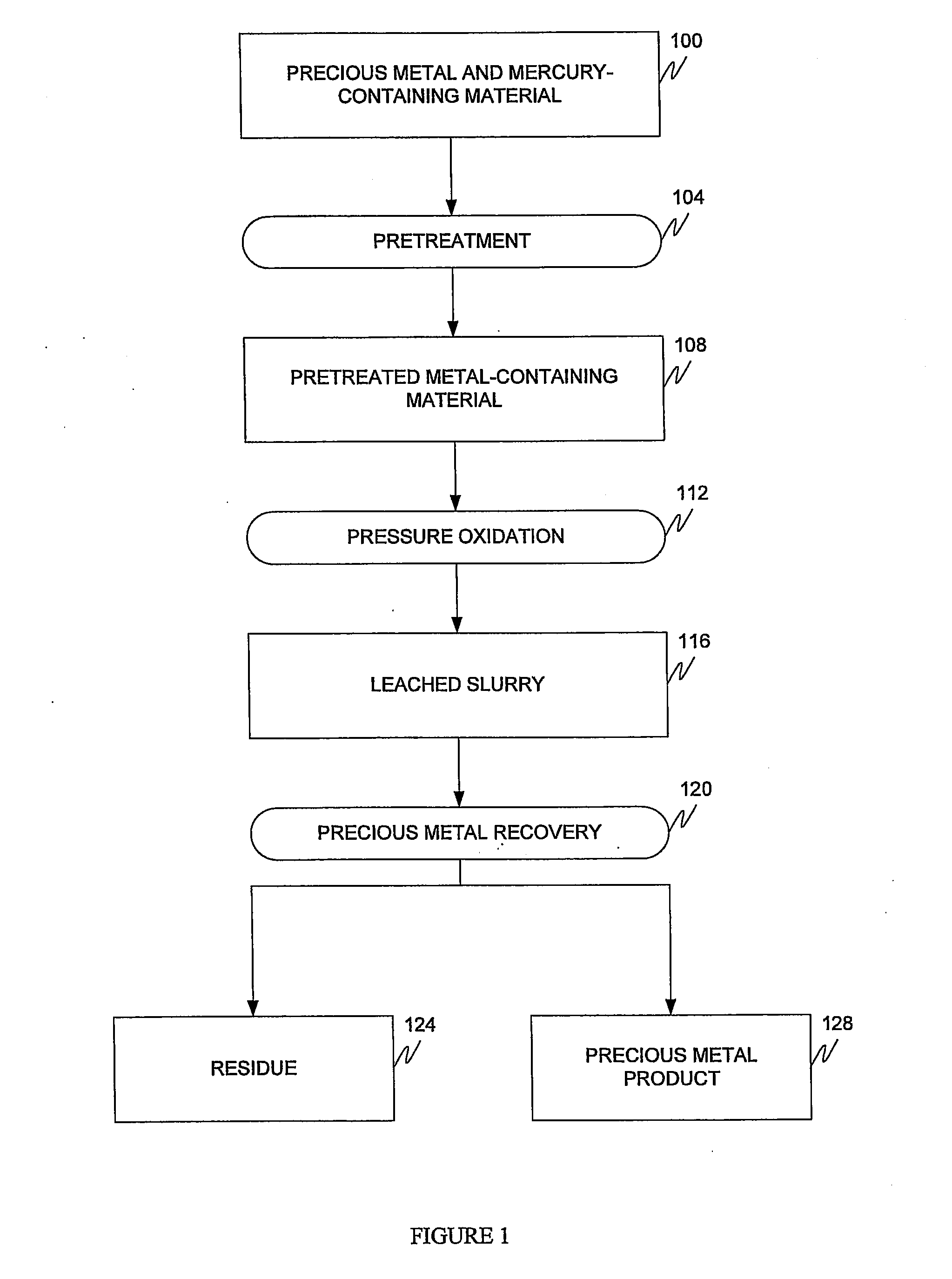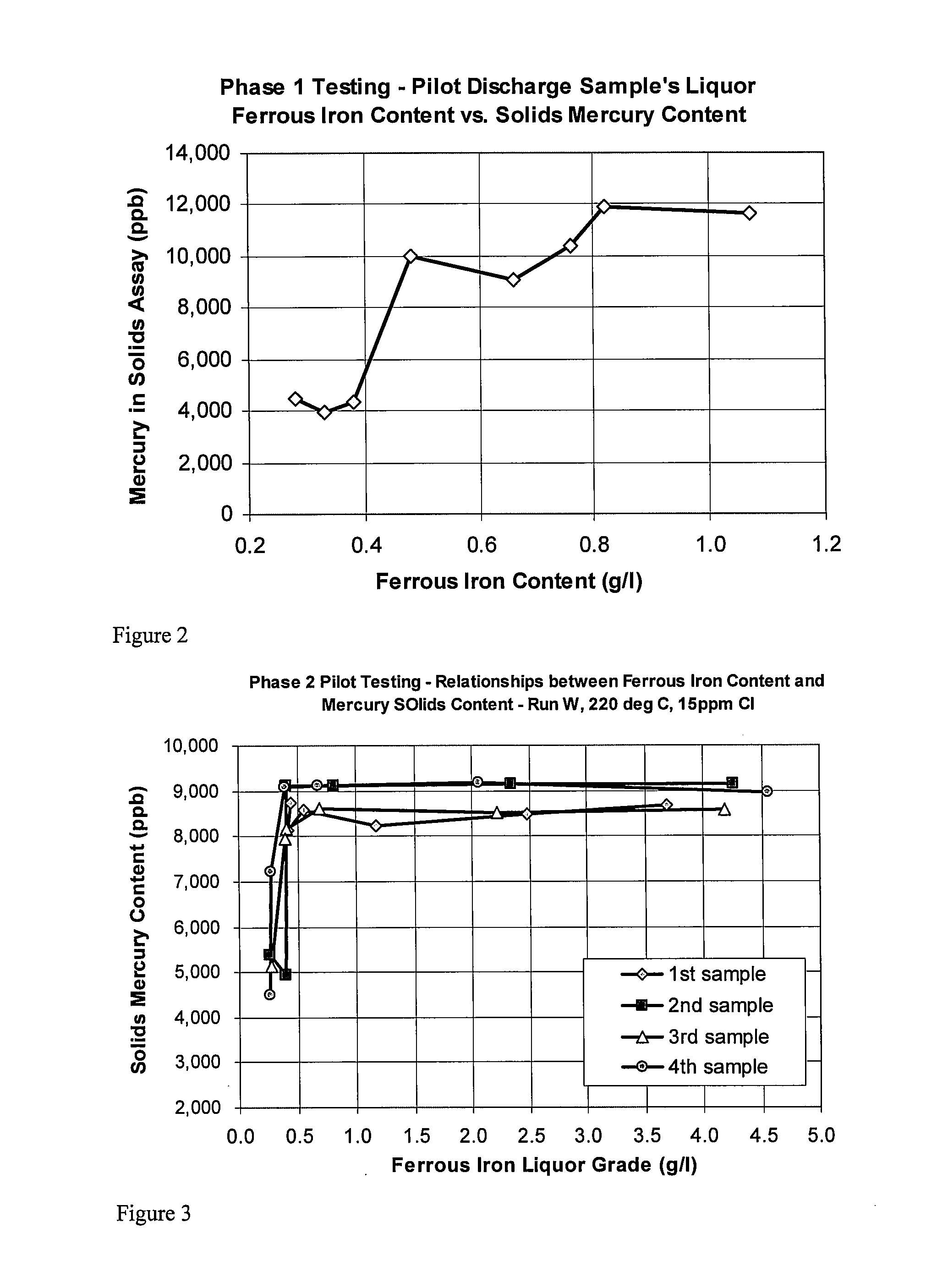Process for mercury control during pressure oxidation
a technology of pressure oxidation and mercury, which is applied in the direction of dissolving, separation processes, furnaces, etc., can solve the problems of gold recovery from most ores by cyanide leaching not being effective, further losses in gold recovery can occur, and oxidized mercury is difficult and expensive to remove from steam and liquid phase, so as to reduce the content of other waste or recycle streams, reduce dissolution of gold, and simplify waste gas and effluent treatment
- Summary
- Abstract
- Description
- Claims
- Application Information
AI Technical Summary
Benefits of technology
Problems solved by technology
Method used
Image
Examples
example 1
[0067]Testing (Phase 1) was performed using a continuously fed 6 compartment autoclave, which was configured so that compartments 1 and 2 formed a single double sized compartment. The feed slurry was pre-treated with acid to a pH of approximately pH 1 and a percent solids of approximately 45% solids and was fed into the autoclave to achieve a residence time of approximately 70 to 140 minutes, and temperatures ranging from 200 to 225 degrees Celsius were tested. The oxygen over pressure was adjusted based upon pressure oxidation temperature. Samples were collected from the compartments and from the autoclave discharge. The Eh was measured relative to a standard silver chloride electrode. The mercury, sulfide, and gold in the collected solids was assayed. The mercury and total and ferrous iron in solution was measured. The results are summarized in both Table 1 and Table 2. All samples after compartment 3 show greater than 95% sulfide oxidation.
TABLE 1Phase 1 Pilot Testing - Mercury A...
example 2
[0069]Testing (Phase 2) was performed using a continuously fed 6 compartment autoclave, which was configured so that compartments 1 and 2 formed a single double sized compartment. The feed slurry was pre-treated with acid to a terminal pH of approximately 1 and a percent solids of approximately 45% solids was fed into the autoclave to achieve a residence time of approximately 45 to 55 minutes, and temperatures ranging from 220 to 225 degrees Celsius were tested. The oxygen over pressure was adjusted based upon pressure oxidation temperature. Samples were collected from the compartments and from the autoclave discharge. The Eh (mV) was measured relative to a standard silver chloride electrode. The mercury, sulfide, and gold were measured in the solids. The mercury, total, and ferrous iron was measured in the solution. The results are summarized in both Table 3 and Table 4. All samples after compartment 3 show greater than approximately 98% sulfide oxidation.
[0070]During Phase 2 of th...
PUM
| Property | Measurement | Unit |
|---|---|---|
| concentration | aaaaa | aaaaa |
| oxidation/reduction potential | aaaaa | aaaaa |
| operating temperature | aaaaa | aaaaa |
Abstract
Description
Claims
Application Information
 Login to View More
Login to View More - R&D
- Intellectual Property
- Life Sciences
- Materials
- Tech Scout
- Unparalleled Data Quality
- Higher Quality Content
- 60% Fewer Hallucinations
Browse by: Latest US Patents, China's latest patents, Technical Efficacy Thesaurus, Application Domain, Technology Topic, Popular Technical Reports.
© 2025 PatSnap. All rights reserved.Legal|Privacy policy|Modern Slavery Act Transparency Statement|Sitemap|About US| Contact US: help@patsnap.com



